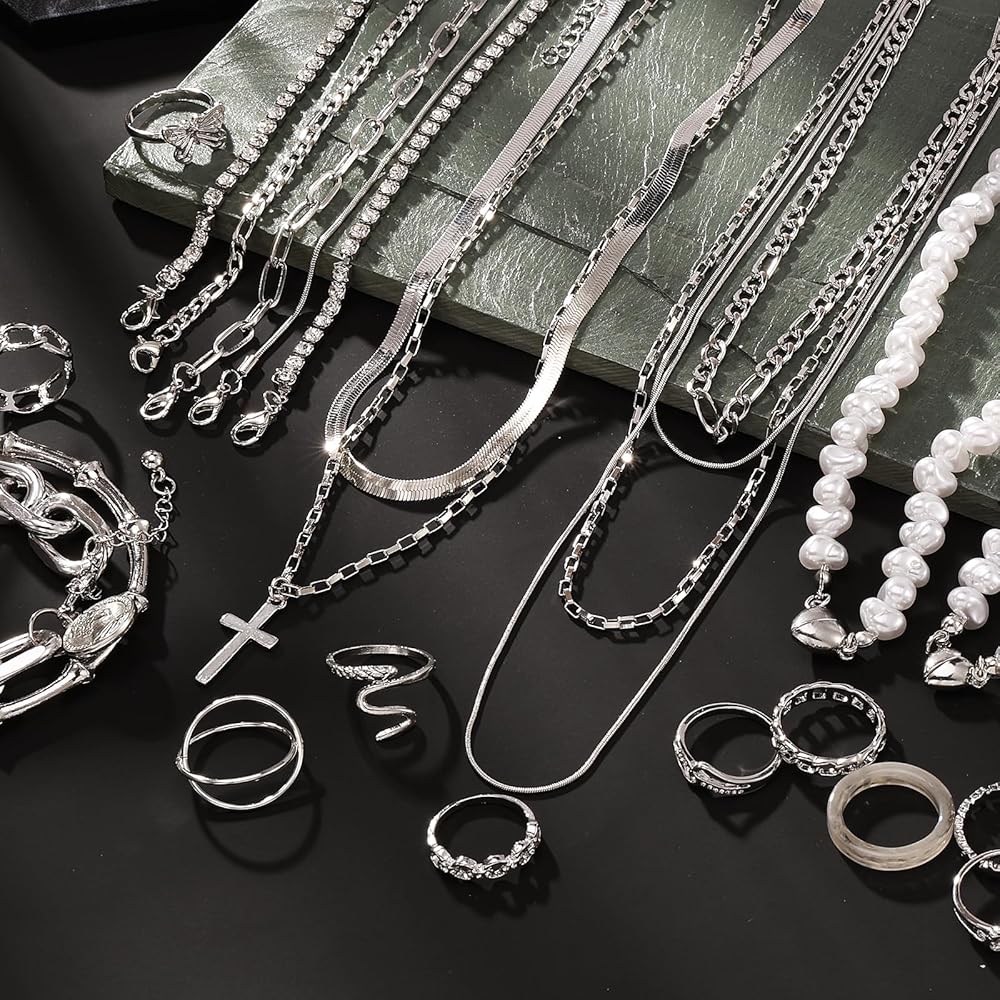The Holy Land, a crossroads of cultures, religions, and histories, has long been a cradle for exceptional artistry. Among its most captivating crafts is Silver jewelry, an art form that blends tradition, symbolism, and meticulous craftsmanship. From delicate necklaces to intricate rings, silver jewelry from the region not only serves as a personal adornment but also tells stories of heritage, spirituality, and artistic excellence.
In this article, we will explore the fascinating world of silver jewelry in the Holy Land, uncovering its history, techniques, and enduring appeal, providing a rich experience for both enthusiasts and collectors.
A Rich History of Silver Jewelry in the Holy Land
The tradition of crafting silver jewelry in the Holy Land dates back thousands of years, influenced by various civilizations that inhabited the region, including the Canaanites, Romans, Byzantines, and Ottomans.
Origins and Historical Significance
Silver has always been a prized material, valued for its beauty, malleability, and spiritual symbolism. In the Holy Land, silver jewelry often reflected religious devotion, social status, and cultural identity. Artisans incorporated local motifs, biblical symbols, and regional patterns, creating pieces that were both decorative and meaningful.
During the Ottoman period, silver jewelry in Jerusalem and surrounding cities flourished. Craftsmen used traditional techniques passed down through generations, producing jewelry that was intricate, symbolic, and highly collectible. These pieces often included amulets, filigree work, and engraved inscriptions, making them unique artifacts of cultural history.
Influence of Religion and Tradition
Religion played a pivotal role in shaping the design and use of silver jewelry in the Holy Land. Christian, Jewish, and Muslim communities each contributed to the development of specific styles and motifs. For example, Christian artisans might incorporate crosses and biblical scenes, while Jewish craftsmen often focused on symbols such as the Star of David or Hamsa. These designs not only enhanced the jewelry’s aesthetic appeal but also conveyed deep spiritual significance.
The Craftsmanship Behind Silver Jewelry
Creating silver jewelry is a labor-intensive process that demands skill, precision, and patience. Artisans in the Holy Land continue to honor traditional methods while sometimes incorporating modern techniques.
Selection of Silver and Materials
High-quality silver, often sterling silver with a 92.5% purity, forms the foundation of fine jewelry. Artisans may also incorporate gemstones, enamel, or semi-precious stones to enhance the design. The careful selection of materials ensures durability, beauty, and long-lasting appeal.
Traditional Techniques
- Filigree Work One of the most celebrated techniques in the Holy Land is filigree, where fine threads of silver are twisted, curled, and soldered to create intricate lace-like patterns. This delicate method demands exceptional dexterity and artistic vision.
- Engraving and Embossing Engraving and embossing allow artisans to imprint symbolic motifs or geometric patterns on silver surfaces. Each piece becomes a narrative, telling stories of faith, culture, and history.
- Hammering and Casting Hammering transforms silver sheets into unique shapes, while casting allows the creation of detailed components for jewelry sets. These techniques combine to produce pieces that are both robust and visually stunning.
Modern Adaptations
While traditional craftsmanship remains highly valued, contemporary artisans often blend old techniques with modern designs. This fusion has expanded the appeal of silver jewelry, attracting collectors and fashion enthusiasts worldwide.
Iconic Styles of Silver Jewelry in the Holy Land
The Holy Land’s jewelry is celebrated for its variety, symbolism, and intricate design. Each style reflects a unique cultural influence and artistic heritage.
Filigree Jewelry
Filigree jewelry remains a hallmark of the region. Intricate lace-like patterns adorn earrings, bracelets, and pendants, demonstrating the artisan’s skill and creativity. Filigree pieces are often lightweight yet visually striking, making them ideal for both everyday wear and ceremonial occasions.
Gemstone-Embedded Jewelry
Silver jewelry in the Holy Land often features gemstones such as turquoise, garnet, and amber. These stones add color, symbolism, and energy to the pieces, enhancing their appeal. Gemstone-embedded designs are frequently seen in rings and necklaces, reflecting both beauty and cultural storytelling.
Symbolic Amulets and Religious Motifs
Amulets and religious symbols are deeply embedded in the tradition of silver jewelry. Jewelry adorned with Hamsa hands, crosses, Stars of David, or Arabic inscriptions serve as protective charms, spiritual tokens, and cultural identifiers. These designs are highly sought after by collectors who value both artistry and meaning.
The Cultural and Economic Significance
Silver jewelry is more than an art form; it plays a vital role in the social and economic life of the Holy Land.
Jewelry as Cultural Heritage
Each piece of silver jewelry carries centuries of tradition and cultural memory. It connects the wearer to the region’s history, allowing artisans to preserve heritage while creating something timeless. Museums, galleries, and cultural institutions, including the Jerusalem Art Museum, actively showcase these works, emphasizing their historical and artistic importance.
Impact on Local Economy
Craftsmanship in silver jewelry also contributes significantly to the local economy. Artisan workshops provide employment, promote tourism, and sustain cultural practices. The export of handcrafted silver jewelry further spreads the Holy Land’s artistic reputation globally, attracting buyers who appreciate authenticity and craftsmanship.
Collecting and Caring for Silver Jewelry
Owning silver jewelry from the Holy Land is a rewarding experience, but proper care is essential to maintain its beauty and value.
Tips for Collectors
- Verify Authenticity: Look for stamps indicating silver purity and ask for provenance, especially for antique pieces.
- Understand Symbolism: Knowledge of cultural motifs enhances appreciation and helps identify unique pieces.
- Invest in Quality: Prioritize craftsmanship over mass-produced items to ensure longevity and collectability.
Caring for Silver Jewelry
Silver is prone to tarnishing over time. Regular cleaning with a soft cloth, proper storage in airtight containers, and occasional professional polishing preserve the jewelry’s shine and integrity. Avoiding harsh chemicals ensures that both the silver and any gemstones remain pristine.
Why Silver Jewelry from the Holy Land Is Timeless
Silver jewelry from the Holy Land continues to captivate collectors, tourists, and fashion enthusiasts worldwide. Its enduring appeal lies in:
- Artistic Excellence: Every piece reflects meticulous craftsmanship and a deep understanding of design.
- Cultural Significance: Jewelry serves as a tangible connection to centuries of religious, historical, and artistic heritage.
- Versatility and Beauty: Silver’s lustrous quality and compatibility with gemstones make it adaptable to various styles, from traditional to contemporary.
Owning a piece of silver jewelry from the Holy Land is more than an aesthetic choice—it is a connection to a living tradition that celebrates creativity, spirituality, and cultural identity.
Conclusion
The art of crafting silver jewelry in the Holy Land represents a harmonious blend of history, culture, and artistry. From ancient techniques like filigree and engraving to modern adaptations that cater to global tastes, each piece tells a story of skill, tradition, and beauty. Collectors, enthusiasts, and tourists alike can experience this unique artistry firsthand at institutions like the Jerusalem Art Museum, where history and craftsmanship converge.
Whether as a personal adornment, a collectible, or a gift, silver jewelry from the Holy Land offers timeless elegance and a profound connection to one of the world’s most culturally rich regions. By appreciating its artistry and preserving its legacy, we ensure that this exquisite craft continues to shine for generations to come.



